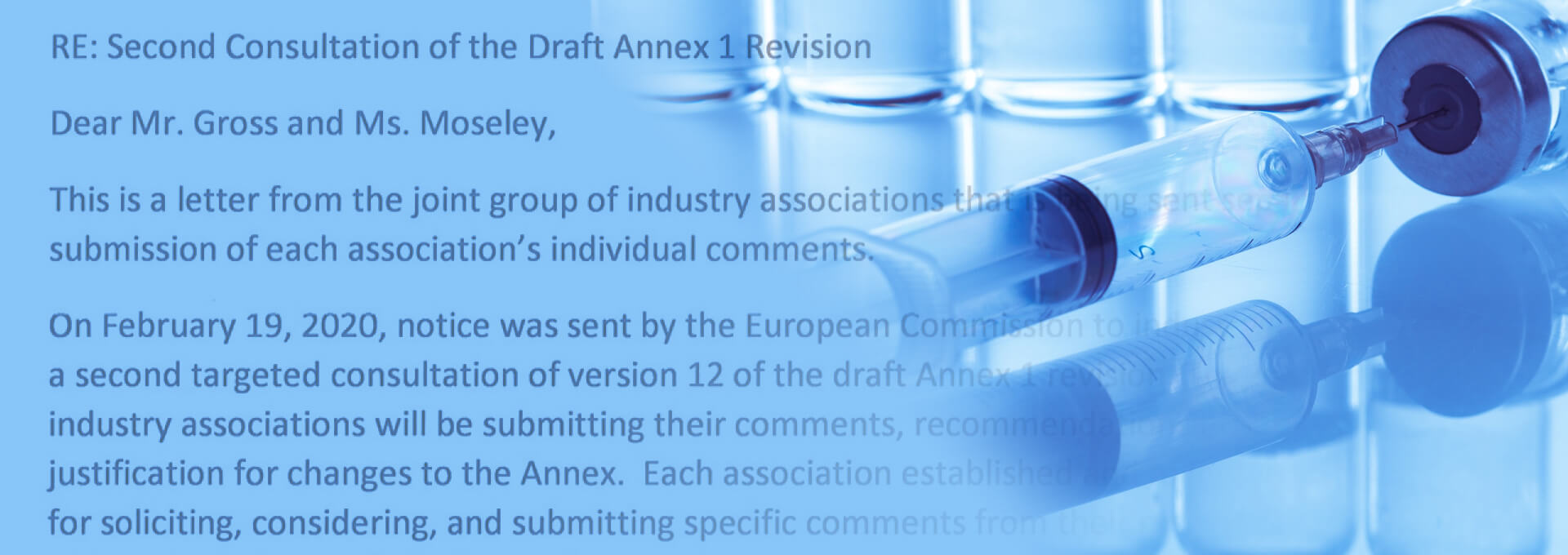Joint Associations’ Response Letter on EU Annex 1 Draft

On July 10, 2020, PDA, on behalf of a group of over 10 industry associations, submitted a letter (see box below) to the European Commission and the European Medicines Agency (EMA) to augment the submittal of industry comments which had been requested by EMA for consultation on the February 2020 draft revision to Annex 1.
While the associations submitted their individual sets of more detailed comments, this joint association letter noted where the associations had reached a consensus on several general aspects of the Annex 1 revision.
The letter presented below is significant, because it shows regulators that industry associations with varying membership and objectives can speak with one voice when needed to point out the importance of addressing common concerns.
The latest version of the Annex 1 is one of the most anticipated regulatory guidance documents issued in the past several years. It is expected that the revised Annex 1 will be used worldwide (i.e., not only in Europe) as it is the outcome of the effort of a joint EMA-PIC/S task force. It addresses questions and concerns related to both aseptic process and terminal sterilization of current sterile products and therapies. It will likely be seen and used to help guide companies and regulators to address: the challenges of manufacturing new ATMPs and other advanced therapies, the utilization of innovative technologies and approaches, and the needs for global distribution. It should be appropriate for approaches and innovative technologies that are just now being contemplated and ones that will be developed as we move into the future.
To meet its objectives, the Annex must be clearly written and understood by a wide span of companies manufacturing products in numerous countries throughout the world. It must be based on good scientific and risk management principles. It must allow for, and if possible, encourage, the pursuit and adoption of continuously improved processes and process control technologies and approaches. It should not be overly prescriptive and become a barrier to companies challenging existing approaches that may not fit modern manufacturing processes.
The associations signing this letter did so to emphasize the importance of the effort and the willingness of the industry to work with regulators to make this a more effective guidance, to better promote its accurate use, and to achieves the common objectives and benefits of all stakeholders, and specifically of the patients.
PDA also submitted its own comments to EMA, which can be found here.






